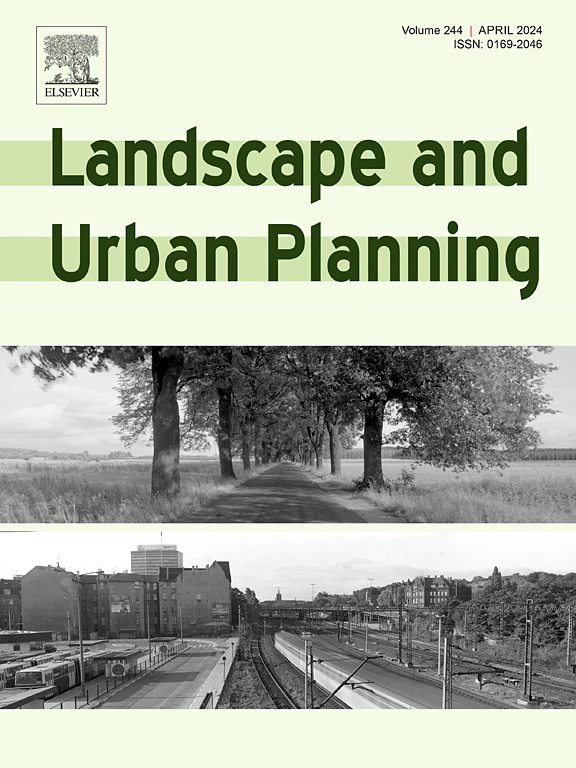Whose woods are these? Forest patch characteristics and ownership across cities of the eastern United States
IF 9.2
1区 环境科学与生态学
Q1 ECOLOGY
引用次数: 0
Abstract
Forests in cities are important social and ecological resources that vary in spatial extent, configuration, and ownership across urban areas, yet these patterns are not well described. Using high resolution urban tree canopy maps and planimetric data from three major cities of the eastern United States (New York, NY; Philadelphia, PA; Baltimore, MD), we distinguish patches of forest from other tree canopy types. We then compare forest patch spatial characteristics and ownership across the three cities. Baltimore has the greatest citywide forest patch cover (8.3 %) and forest patch area per resident (29.5 m2/person), followed by Philadelphia (6.3 % and 13.7 m2/person) and New York City (3.9 % and 3.5 m2/person). Baltimore’s forest also has the largest median patch sizes, and the lowest citywide forest edge to core ratio. Thus, we find Baltimore’s forest cover to be more concentrated and less fragmented than the other two cities. While all cities have a majority of forest patch area located on municipal property, Baltimore has the greatest amount of privately owned forest, followed by Philadelphia and then NYC. Baltimore also has the largest number of property parcels and owner types per patch compared to the other two cities. These patterns in distribution of forest cover reflect historical and present-day processes of local ecology and economic development, and have implications for effective conservation and management of forests in cities.
这些树林是谁的?美国东部城市的森林斑块特征和所有权
城市森林是重要的社会和生态资源,不同城市地区的森林在空间范围、结构和所有权方面存在差异,但这些模式尚未得到很好的描述。利用美国东部三个主要城市(纽约,纽约州;费城,宾夕法尼亚州。巴尔的摩,马里兰州),我们将森林斑块与其他树冠类型区分开来。然后,我们比较了三个城市的森林斑块空间特征和所有权。巴尔的摩拥有全市最大的森林斑块覆盖率(8.3%)和人均森林斑块面积(29.5平方米/人),其次是费城(6.3%和13.7平方米/人)和纽约市(3.9%和3.5平方米/人)。巴尔的摩的森林也有最大的中位数斑块大小,全市森林边缘与核心的比例最低。因此,我们发现巴尔的摩的森林覆盖比其他两个城市更集中,更不分散。虽然所有城市的大部分森林都位于市政财产上,但巴尔的摩拥有最多的私人拥有森林,其次是费城,然后是纽约。与其他两个城市相比,巴尔的摩也拥有最多的房产地块和每个地块的业主类型。森林覆盖分布的这些格局反映了当地生态和经济发展的历史和当今进程,并对城市森林的有效养护和管理产生影响。
本文章由计算机程序翻译,如有差异,请以英文原文为准。
求助全文
约1分钟内获得全文
求助全文
来源期刊

Landscape and Urban Planning
环境科学-生态学
CiteScore
15.20
自引率
6.60%
发文量
232
审稿时长
6 months
期刊介绍:
Landscape and Urban Planning is an international journal that aims to enhance our understanding of landscapes and promote sustainable solutions for landscape change. The journal focuses on landscapes as complex social-ecological systems that encompass various spatial and temporal dimensions. These landscapes possess aesthetic, natural, and cultural qualities that are valued by individuals in different ways, leading to actions that alter the landscape. With increasing urbanization and the need for ecological and cultural sensitivity at various scales, a multidisciplinary approach is necessary to comprehend and align social and ecological values for landscape sustainability. The journal believes that combining landscape science with planning and design can yield positive outcomes for both people and nature.
 求助内容:
求助内容: 应助结果提醒方式:
应助结果提醒方式:


